J.D. Power Survey Finds Quality Control Has Fallen Into the Abyss

J.D. Power has released its Initial Quality Study for 2023 and the big takeaway seems to be that the automotive industry continues to fumble. While manufacturers are bending over backward to implement novel technologies and features, last year’s survey revealed that customers felt vehicular quality reached its lowest level in more than three decades.
It’s even worse this year.
Looking at the survey, new-vehicle owners reported 192 problems per 100 vehicles on average. That’s up from 180 a year earlier and 162 in 2021, when quality assurance really started taking a nosedive.
While new-vehicle quality improved for 12 of the 33 brands ranked in the study, some of the names at the top of the list were a big surprise. Numerous Stellantis brands accrued far fewer complaints than other marquees, including Alfa Romeo, and was followed by a slew of nameplates owned by General Motors.
Other names that managed to beat the industry average you might not have expected to see included Mini, Nissan, and all of the Korean brands. Even stranger was that Toyota failed to beat the industry average — coming in right behind Mitsubishi, which has been working to improve its quality control for years.
Interestingly, a lot of the brands we’ve associated with sub-par reliability in recent years improved their performance for 2023. But the general trend was still that the automotive industry seems to be having serious trouble building automobiles without issues. Your author has been warning everyone in the market for a new vehicle to be exceptionally careful. Pricing still seems a little high and loans are becoming harder to manage with annual percentage rates going up. But quality control seems to have absolutely plummeted in recent years.
Going into the pandemic, there was a minor scandal involving Japanese automakers that were cutting corners on inspection protocols. However, things didn’t seem to be much better anywhere else on the planet and the whole thing went from bad to worse the second the pandemic started. As luck would have it, piecemeal manufacturing done as components trickle in from suppliers trying to contend with skeleton crews and massive amounts of downtime wasn’t a great way to bolster vehicle quality.
With everyone preoccupied with ever-changing health protocols and supply chains that had been upended by government-backed restrictions, there really wasn’t a lot of room to ensure automobiles were being made properly. Though there are certainly other factors to consider.
Many brands have begun shifting away from tried-and-true physical hardware to embrace electronic everything. Drive-by-wire has become the status quo, physical buttons are being supplanted by touch screens, and some bad software can make all of the above inoperable. Some of that is due to growing pains. Newer technologies often take some time to become as reliable as what came before. But the industry is also trying to produce vehicles more cheaply as it embraces technologies and features that are still relatively novel.
Volkswagen may offer classic designs and automobiles that seem to punch well above their price point. But leaning into touch controls has arguably made its interiors a lot less enjoyable and the company already had a bad reputation for wonky electronics. The situation has stymied the launch of numerous VW products and made plenty of people I know second guess buying from the brand.
Meanwhile, Dodge, Ram, and Alfa Romeo topped J.D. Power's 2023 U.S. Initial Quality Study. While Alfa releases a lot of desirable automobiles, its questionable reliability has been a meme for decades. But we know why Dodge is getting praised. The brand has basically been building the same vehicles since 2011 (upgrading them along the way) and has gotten pretty good at it.
By contrast, all-electric brands ended up at the bottom of the Initial Quality Study. Tesla and Polestar saw more complaints than any other brand by a fairly wide margin. Rivian and Lucid also performed terribly. But J.D. Power said their sample size was too small to be considered official.
The reason for the EV disparity came down to there being too much new technology going into the vehicles. Though that is hardly an issue limited to vehicles wholly dependent upon battery power, as all manufacturers seem to be chasing the trend. The phenomenon even managed to bump Toyota off its pedestal. Famous for building dependable automobiles, Toyota has started to embrace a lot of the stuff that’s been causing all manufacturers problems.
J.D. Power’s position is that cars boasting the latest technologies are becoming too complex. Having more features means there are more things to go wrong. But the same is true for adopting the freshest tech. Newer powertrains focused on efficiency tend to be smaller than what came before and often incorporate forced induction or hybridization. That adds strain and complexity issues engineering needs more time to remedy.
But it’s not just powertrains. Consider modern infotainment systems. Older cars might see their controls for the radio or HVAC system acting up. But many modern vehicles run the risk of becoming totally useless whenever the infotainment system becomes unresponsive. These units also offer a slew of new features older systems lacked — all of which could go wrong.
“The automotive industry is facing a wide range of quality problems, a phenomenon not seen in the 37-year history of the [Initial Quality Study],” said Frank Hanley, senior director of auto benchmarking at J.D. Power. "The industry is at a major crossroad and the path each manufacturer chooses is paramount for its future. From persistent problems carrying over from years past to an increase in new types of problems, today’s new vehicles are more complex—offering new and exciting technology—but not always satisfying owners.”
The group’s study was conducted from February through May and is based on survey data compiled from 93,380 buyers and lessees of new 2023 model-year vehicles.
While we’re less inclined to worry about exactly where each brand ranked, as the real difference often comes down to specific models, you’re welcome to pursue J.D. Power’s list (above). Though it’s perhaps more useful to take a gander at which features proved to be the most troublesome and garnered the most amount of complaints from consumers.
The outlet claimed that trick door handles are causing a lot of frustration. This is an aspect of the vehicle you’re required to interface with every time you use it. But recessed handles that pop out need to function perfectly every time. The same is true for vehicles that unlock themselves whenever a driver approaches.
Survey respondents likewise had bad things to say about driver assistance features. Problems associated with lane departure warning/lane keeping assistance and forward collision warning/automatic emergency braking turned out to be particularly troublesome by being the most widely noted and seeing their complaint frequency rise against 2022.
Still, we can’t really peg any singular feature as the one that’s creating the most strife. The entire industry is suffering from a lapse in quality and it needs to be addressed immediately.
[Image: Volvo Cars; J.D. Power]
Become a TTAC insider. Get the latest news, features, TTAC takes, and everything else that gets to the truth about cars first by subscribing to our newsletter.

A staunch consumer advocate tracking industry trends and regulation. Before joining TTAC, Matt spent a decade working for marketing and research firms based in NYC. Clients included several of the world’s largest automakers, global tire brands, and aftermarket part suppliers. Dissatisfied with the corporate world and resentful of having to wear suits everyday, he pivoted to writing about cars. Since then, that man has become an ardent supporter of the right-to-repair movement, been interviewed on the auto industry by national radio broadcasts, driven more rental cars than anyone ever should, participated in amateur rallying events, and received the requisite minimum training as sanctioned by the SCCA. Handy with a wrench, Matt grew up surrounded by Detroit auto workers and managed to get a pizza delivery job before he was legally eligible. He later found himself driving box trucks through Manhattan, guaranteeing future sympathy for actual truckers. He continues to conduct research pertaining to the automotive sector as an independent contractor and has since moved back to his native Michigan, closer to where the cars are born. A contrarian, Matt claims to prefer understeer — stating that front and all-wheel drive vehicles cater best to his driving style.
More by Matt Posky
Latest Car Reviews
Read moreLatest Product Reviews
Read moreRecent Comments
- Ajla I did like this one.
- Zerofoo No, I won't miss this Chevrolet Malibu. It's a completely forgettable car. Who in their right mind would choose this over a V8 powered charger at the rental counter? Even the V6 charger is a far better drive.
- Offbeat Oddity Nope, I won't miss it. I loved the 2008-2012 Malibu, but the subsequent generations couldn't hold a candle to it. I think the Impala was much more compelling at the end.
- Zerofoo An almost 5000 pound hot hatch that fell out of the ugly tree and hit every branch on the way down? No thanks.
- Tassos Jong-iL This would still be a very nice car in North Korea.

















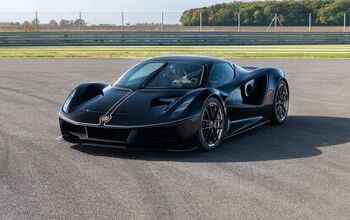
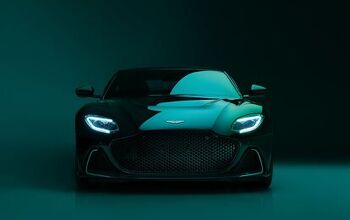

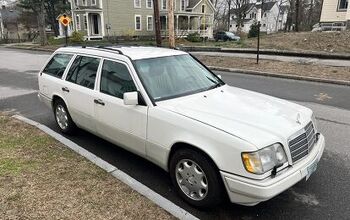
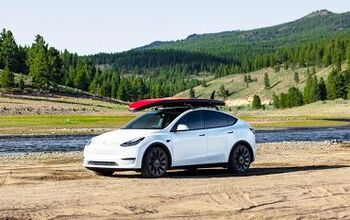
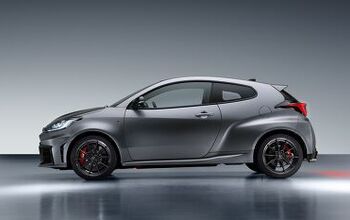


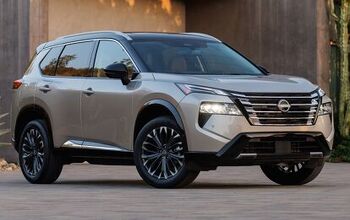
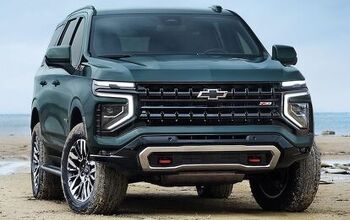

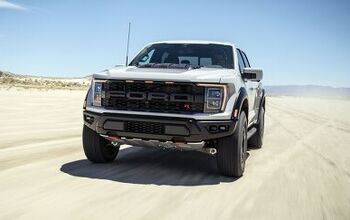
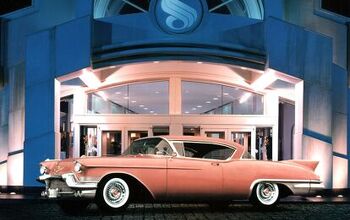
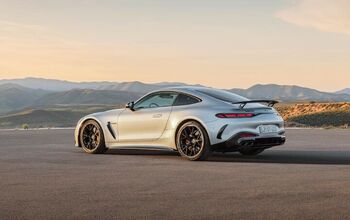




Comments
Join the conversation
We're supposed to believe that Dodge, RAM and Alfa Romeo are at the top, while Chrysler, making the same car with the same engine, interior, switchgear, electronics, Infotainment, & drive-train as Dodge is at the absolute bottom? Something doesn't add up.
Alfa Romeo is right up there at the top of the list. Could that be due to the sample size being so small? And Jaguar bested Toyota. Don't look now, but the sun is about to rise in the west.